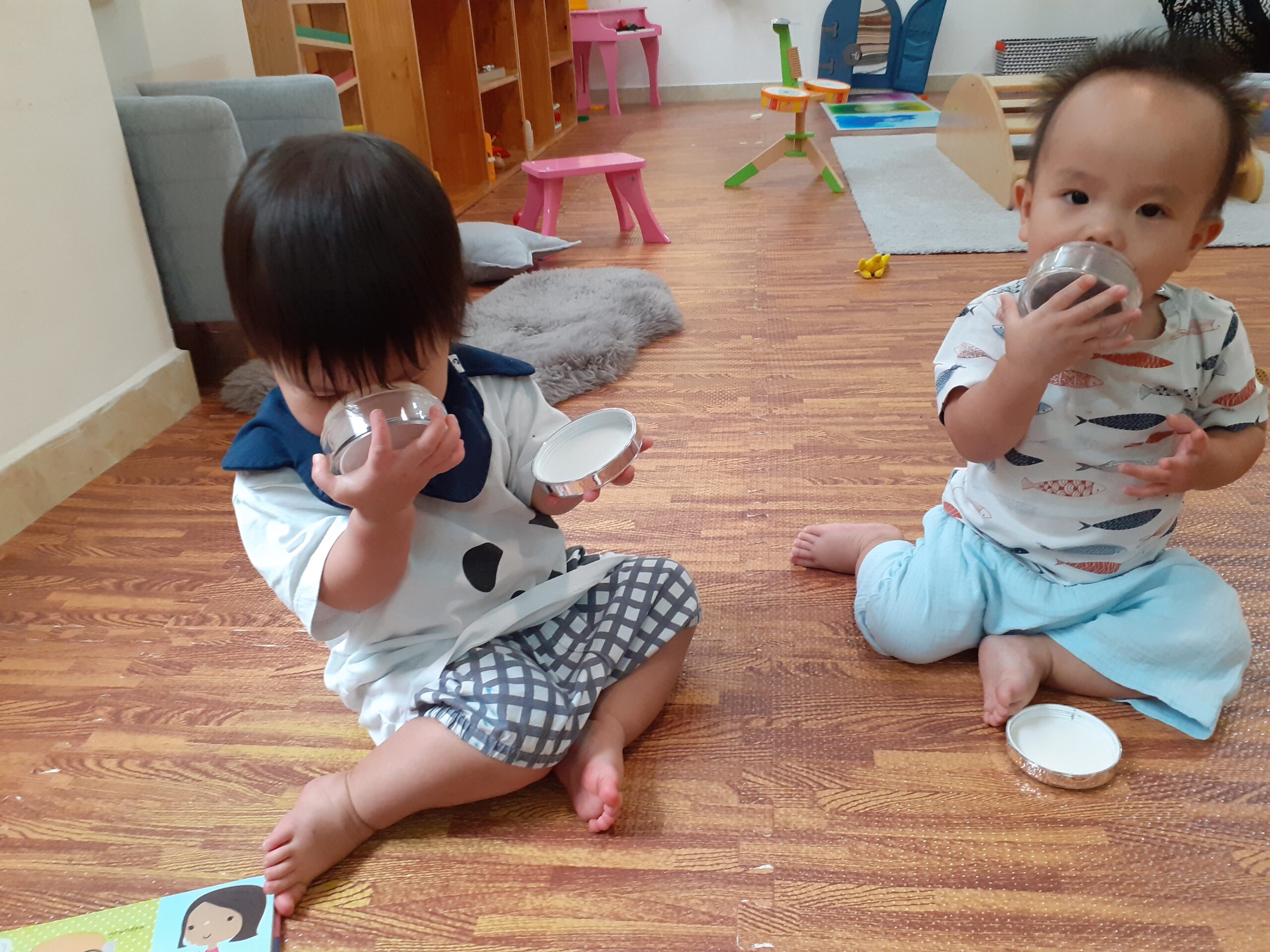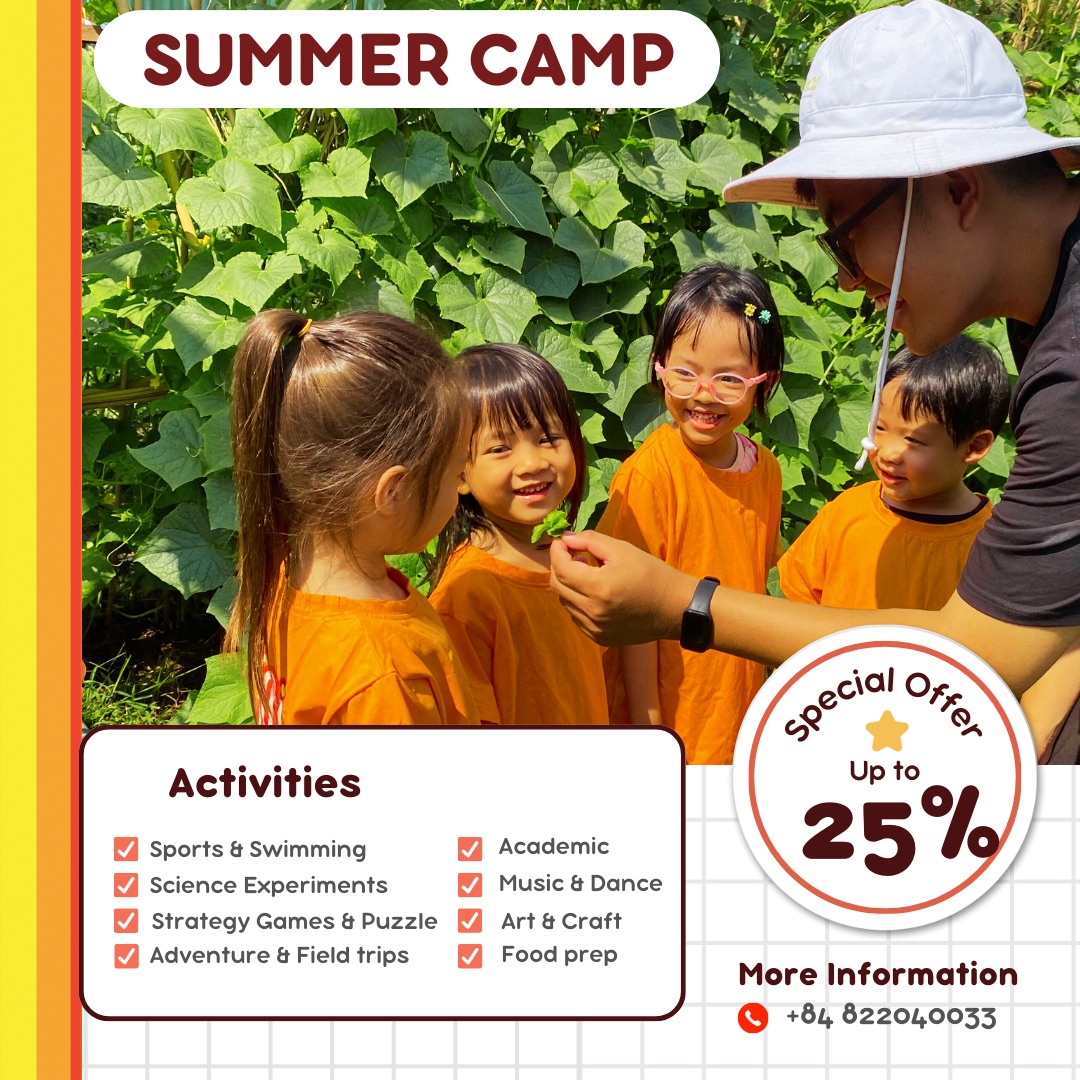Learning with all our senses allows us to have a fuller, richer experience. Montessori School strives to provide opportunities for children to experience all senses. And let them learn from the world around them through those senses.
1. Montessori School explores deeper than the five common senses.
As you grow up, you certainly learned about sight, hearing, taste, touch, and smell. These are, of course, the five basic senses that we tend to think of, but at Montessori School children will have access to the following 8 senses. 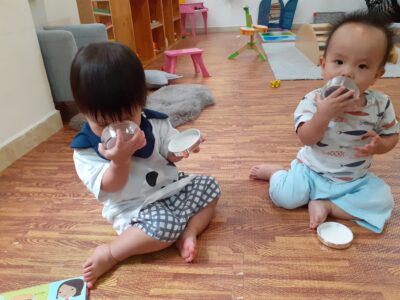
Visual.- The ability to distinguish objects by form, color, and size.
Tactile/Touch. – the sense of touch, or how something feels on our body
Baric. – ability to distinguish differences based on weight and / or pressure
Thermic. – ability to feel differences in the temperatures
Auditory. – another name to describe the ability of hearing sound
Olfactory. – our sense of smell
Gustatory/Taste. – the sense of taste
Stereognostic. – A muscular sense or ability to identify an object without seeing, listening, or tasting it, instead relies entirely on touch and muscle memory.
2. Montessori School helps children to fully develop their senses.
Dr. Maria Montessori has developed a variety of sensory materials to be used in classrooms for young children in particular. Such tools are meant to separate skills and are self-adjustment. This helps the child to concentrate their attention on studying and to be autonomous. Here are some of the amazing tools.
Knobbed Cylinders – Small wooden cylinders with knobs inserted in holes of the corresponding size
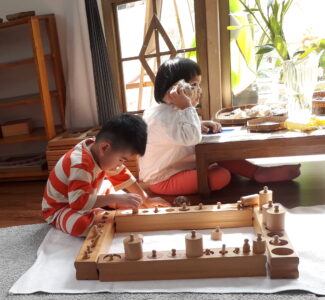 Pink Tower – many pink wooden cubes of sizes 10 cm to 1 cm cubes stacked in descending direction
Pink Tower – many pink wooden cubes of sizes 10 cm to 1 cm cubes stacked in descending direction
Brown stairs – brown wooden, rectangular prisms of various sizes arranged in order.
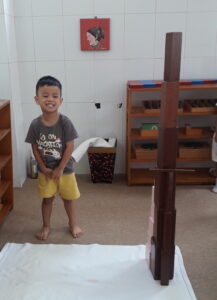
Colour Tablet – a material that allows children to distinguish not only by color but also by shades of color.
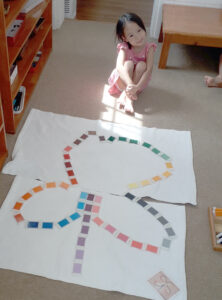
Mistery Bag – Children reach into the pocket without looking and determine the things inside it.
Geometric solids – Symbolic shapes to teach children about abstract concepts, these shapes allow children to define their properties.
3. Food is prepared nutritiously in Montessori School classes:
Montessori children are personally interested in cooking and deliberately enjoying food, beginning as a toddler. There are daily tastings for Toddler classrooms, in which they explore fresh and exciting tastes. Guides can provide the children with a full range of textures, colors, sounds, and tastes to discover. These little ones help set the table and, by table etiquette, practice grace and courtesy.
In the kindergarten classes ( 3-5 years), children participate in the food preparation. They are provided the lessons and the chance to practice slicing, spreading, mixing, blending skills and take part in the multi-step food preparation. Sometimes they enjoy their work as a snack for themselves; other times they prepare food to serve to others.
Instruction at older levels seeks to continue this important work. Food preparation may involve a cultural session, birthday celebration, or school lunch program. As they get older, they are more likely to complete more complex and interesting recipes.
4. The classroom environment closes to the natural world.
Nature has become an important part of the environment of the classroom. There must be plenty of trees for the setting. Studies have demonstrated that we benefit in certain aspects from closeness to plants. They are beautiful in nature and deepen our concentration at the same time.
Besides having trees in the classroom, Montessori School prioritizes natural materials over synthetic materials.
We choose wooden, glass, and natural baskets instead of plastic ones. The color and texture of natural aids will soothe the child’s senses. Although many conventional classrooms prefer bright colors, we choose natural colors. This, in turn, allows children to feel calm and focused on their work.
Montessori schools always believe in the importance of immersing children in nature. Whether to a local pond, a forest walks, or even a nearby city park. After all, learning from nature life never ends.
References:
Related articles from our website:
International kindergarten fees at HCMC are higher than RMIT
How does Montessori School develop a child’s 8 senses?
Follow and contact us via:
FB: fb.com/riverhousemontessori
Hotline/WhatsApp/Zalo: 0822404033

